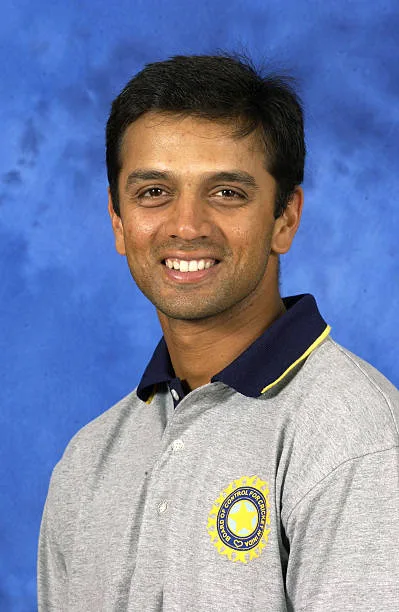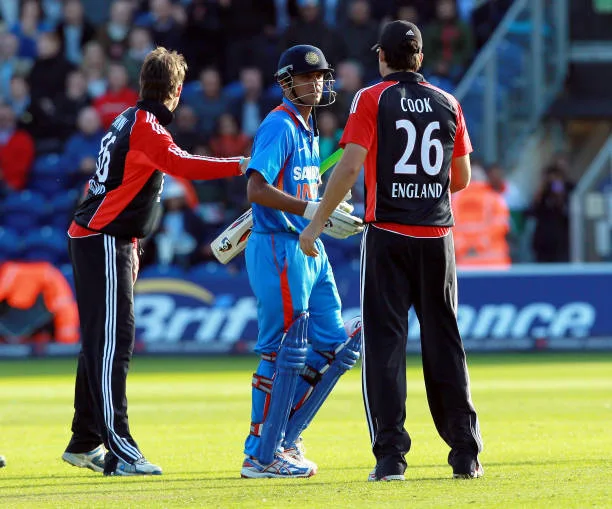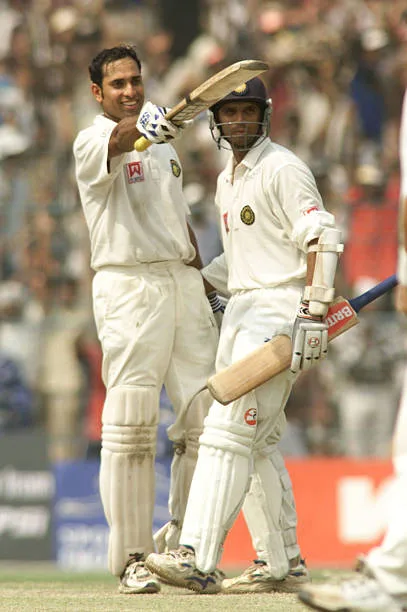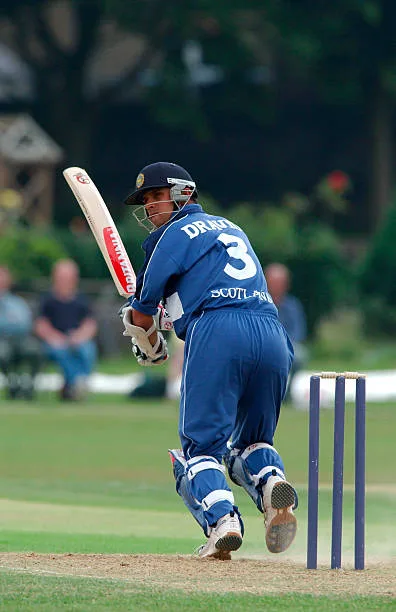Top 10 Life Lessons From India Vs Australia 2020: Courage, Character, Resilience – Which One Is Your Favorite?
India Vs Australia 2020, a series to cherish forever.
In the time of COVID and hardship, this is exactly what was needed. Not only did this series entertain, it also taught us valuable life lessons as well.
Earlier we did a similar piece on 10 Life Lessons from IPL 2020:
- Soil Fertile Elsewhere
- The Audacity of Hope
- Rise Like a Phoenix
- Make Most of Your Opportunities
- Synergy Above All
- Small Hole Can Sink a Ship
- Carry Old Baggage At Your Own Risk
- When One Era Closes, Another Opens
- Fix Roof When Sun Is Shining
- Sportsmanship & Passion For the Game
Today we will add more 10 life lessons from cricket we can apply to our lives.
Table of Contents
- 1. Resilience & Courage
- 2. Just Be Yourself
- 3. Character & Determination
- 4. Fearlessness
- 5. The Whole Is Greater Than Sum of The Parts
- 6. Be Like Pat Cummins
- 7. Fine Line Between Banter & Abuse
- 8. Walk the Talk: Performance Matters
- 9. Leadership Matters
- 10. Do Not Get Ahead of Yourself
- 11. Bonus Story: Superstitions For The Win
- India Vs Australia 2020 Legacy
*Note: Underlined & Bolded links are videos. Underlined without bold are links to other articles.
Also Read: Cricket’s Reflections of Passion, Prediction Results, Life Lessons From Joe Biden & Joe Denly
The Life Lessons
India Vs Australia 2020 Edition
1. Resilience & Courage
Moment: The entire series.
The series can be summed up by Nelson Mandela’s quote, “The greatest glory in living lies not in never falling, but in rising every time we fall.”
Whenever India looked like they were gone, they found a way to get back up.
36/9 in Adelaide and without Virat Kohli at Melbourne. Surely India cannot recover at the Boxing Day Test? Well exactly the opposite happened as India achieved a memorable victory. The entire team rose to the occasion & Rahane, the stand-in captain, stood up with a magnificent century.
Resilience.
Injuries to fast bowlers of the Class of 2018. Before the series, No Ishant, no Bhuvi. Midway through the series, Shami, Umesh, and Bumrah out. By the end, Ashwin, Jadeja, & Vihari are done. Battered & bruised, they draw the third test.
Did the Indian team decide to give up at any point in time? Does India play for the draw in the 4th test? No & No. They go for the win. And they indeed win.
Courage.
Life Lesson 1: It is okay to make mistakes. You will suffer setbacks. The important part is to regroup, learn from these initial setbacks & mistakes, and find your feet again. Keep working. Keep going. Just never give up.
2. Just Be Yourself
Moment: Pant-Pujara Partnership
Oh he plays too slow! No intent shown….Oh he is too reckless. Gets out against the run of play.
This is not a description about one player but a paraphrasing of criticism for two different players, Pujara and Pant.
Balance is important. Criticize these two at your own peril.
Pujara scored his slowest fifty in the first innings of the 3rd Test. He followed it up by his 3rd slowest in the second innings. He went to break his own slowest 50th at the historic Gabba chase.
Pant ‘throws it away’ in the 2019 World Cup Semi-Final. Pant has ‘thrown it away’ several times before. In the third test, he plays a ‘rash’ shot at 97. Hopes of India’s win diminish, but the fact India had hope in the first place is due to Pant. Fortune favors the brave.
Pujara ended the series with a strike rate of 29.2. Pant with 69.89. Neither got a century, yet the partnerships of 148 (265) in Sydney and 61 (141) at Brisbane were monumental in India’s victory.
Cheteshwar Pujara and Rishabh Pant. Chalk and cheese. Yin and Yang.
Life Lesson 2: Adapting to different situations & circumstances in life is important but not at the expense of your innate being. Always learn from others, listen, take their advice, but at the end of the day, you are unique, and that is good enough. Never change who you are for others, and never forget where you came from.
3. Character & Determination
Moment: Hanuma Vihari & R Ashwin in the 3rd Test
Hanuma Vihari had a disastrous series till Day 5 of the 3rd Test. In his 5 innings, he scored 16 & 8, 21, and 4 & 23*. By the 4th day, he had run himself out after looking uncomfortable with a 4 (38), dropped a couple of crucial chances, and had been hit numerous times at forward short leg.
When Pujara & Pant depart on Day 5, Vihari has only scored 3*(31) with a session & a half to go. Just to put salt on the wound, Vihari suffers a hamstring injury. His new partner, R Ashwin, neither has form on his side nor a functioning back.
But boy, does he have spine? Post tea, he gets battered with short deliveries and gets hit on the ribs & shoulders.
Response? They pull off one of the major heists in recent Test cricketing memory. Vihari 23*(161) with over 4 and a half hours of batting & 39*(128) in 3 hours for Ashwin. Partnership of 62*(259).
If this is not one of the greatest displays of character & determination, I just don’t know what is.
Life Lesson 3: Sometimes things are in your favor. At other times, they are not. Vihari could have easily retired hurt and cared for his place in the 4th Test. These moments are what life is all about. Even when you are not 100% physically or mentally, stay in the moment & give it your all.
Don’t retire hurt and sell yourself short.
4. Fearlessness
Moments: India’s youngsters rise to the occasion. Pant’s 97 & 89*, Sundar 62, Thakur 67 & 7 wickets, Siraj’s 5-for, & Shubman Gill’s 91.
Mark Twain is credited to have said, “Do the thing you fear, and the death of fear is certain.”
The embodiment of fearlessness was displayed by India’s youth in this tour—Debutants Shubman Gill, Mohammad Siraj, Washington Sundar, (almost debutant) Shardul Thakur, and none more so than the experienced Rishabh Pant.
Gill’s backfoot punches are a thing of beauty. Beauty + Consistency + Positive Approach = Brilliance of Shubman Gill. Scores of 45, 35*, 50, 31, 7, and the 91 that gave India belief in Brisbane.
Thakur & Sundar did not fear against Starc-Cummins-Hazlewood. Neither did they blindly hit. They played proper cricketing shots & dominated. On Day 5 and near victory, Sundar pulled dangerous Cummins for six, Pant paddle swept Lyon, & Sundar got out playing a reverse sweep. Fearless stuff.
Life Lesson 4: You will face challenges and difficulties, whether that is related to school or work. Next time you fear how hard the upcoming exam is or if you have self-doubts about completing a project, take a deep breath and invoke your inner Rishabh Pant.
5. The Whole Is Greater Than Sum of The Parts
Moment: India Maximize Available Resource
Luck is when opportunity meets preparation. The youngsters, reserves, & stalwarts of India were prepared when this opportunity came.
Although Rahane’s century was the highlight of Melbourne’s victory, Bumrah and Ashwin were among the wickets, Shubman Gill contributed with a 45 & 35*, & ever dependable Jadeja made a steady 57 along with his fielding efforts.
The Sydney draw was masterminded by Pant-Pujara & Ashwin-Vihari partnerships, but also had key contributions from Gill-Sharma & Jadeja again. In the final Test, the improbable counterattack by Thakur-Sundar, Siraj’s 5-for, & Gill-Pujara-Pant-Sundar took India to victory.
India utilized 20 squad members, Pant was the highest score with only 274 runs, & Siraj the highest wicket taker with 13 wickets. It was a truly a team effort from India’s point of view. Australia had more centuries, highest wicket taker, & most run scorer (since they played all 4 matches).
Life Lesson 5: Learn to work with others. The more diverse the ideas, the better. Individual excellence along with the greater good is the best way forward. Bring others along with you.
If you like this content about India Vs Australia 2020, feel free to subscribe above for FREE and follow us on our social media accounts. We discuss regularly about cricket on our Twitter platform, but also have Facebook, Instagram, and Pinterest Accounts. ALSO TWEET AHEAD AND SHARE!
Embed from Getty Images6. Be Like Pat Cummins
Moment: Pat Cummins bowls his heart out
So why does Cummins get a special mention? Because he was the highest wicket taker at 21 wickets and player of the series? No.
Pat Cummins bowled 162.1 overs, the most by a pacer in this Test series (Lyon with 187). Hazlewood was next with 144.4. This is an amazing feat considering Cummins was marred by injuries in his early career (Test debut in 2011, but did not play any tests between 2012-16).
He was just as intense on Day 1 of the first Test as he was on Day 5 of the 4th. In the final hour of the series, if there was one bowler who Tim Paine could depend on, it was Pat Cummins. Still bowling at 140 clicks, hitting the perfect line & length (Spooky pitch map by the way).
Accuracy, Consistency, Intensity. That’s Pat Cummins for you.
Pujara and the rest of the Indian batsmen had drained the Australian bowling unit. Cummins must have been out of energy. He must have tired, but it did not show. Bowled his heart out.
Life Lesson 6: Success comes before work only in dictionary. If you want to pursue any field, be like Pat Cummins. Give it your 100%. Work hard, play hard, fail, learn, cherish moments of glory, repeat.
7. Fine Line Between Banter & Abuse
Moments: Ashwin-Paine Banter, Mohammad Siraj Racial Abuse
The heat of the moment got to Tim Paine in the 3rd Test match with his banter against Ashwin. It came back to bite him since Australia lost their fortress after 33 years, the Gabbatoir. Paine later came back for an emergency press conference to address the issues. At other times in the series, commentators were guilty of making derogatory remarks against Marnus Labuschagne.
The tensions came to a boil when spectators racially abused Mohammad Siraj on multiple days. Siraj reported the incident to the umpire. Several ex-players, including Justin Langer have come out against it. As Bharat Sundaresan wrote, “Siraj is the hero we need to be.” Bharat also speaks about it here.
Life Lesson 7: Racism is not acceptable in any form. Speak up if you are a victim or a by-stander. Try to learn from other cultures. If you are not sure about a cultural reference or how to pronounce a name, just ask. Don’t Assume. Embrace diversity. Be nice.
8. Walk the Talk: Performance Matters
Moments: Tim Paine & Matthew Wade’s Performances
Tim Paine had a decent series with the bat, especially the counter attacking Player of the Match 73* at Adelaide. The rest of his performance though was below par.
Dropped catches at Sydney & Brisbane, missed DRS reviews, useless banter, & fielding placements. He needs to walk the talk with his captaincy.
The other keeper in the XI, Matthew Wade also needs to walk the talk. He has done a great job plugging holes in Australia’s line up as a middle order, opening batsman, and taking hits from Neil Wagner. In this India Vs Australia 2020 series, he has managed to get out with a soft dismissal on 3-4 occasions.
Life Lesson 8: Words need to be accompanied with actions to have any meaning. Walk the talk & never take anything for granted. When you are doing well, make the most out of your opportunity because the good times can end very quickly.
9. Leadership Matters
Moments: Siraj leads the attack, Rahane consoles Jadeja after Run Out
If I had to remember this series by one story alone, it would be Mohammad Siraj. Siraj comes from a humble background, was in bereavement of his father’s loss, and was racially abused. Bumrah gets injured, and India play the Brisbane Test with a total of 4 Test matches among the 5 bowlers, with Rohit Sharma being the most experienced bowler.
Siraj becomes the leader of the attack, gives advice to Saini, Natarajan, & Thakur, and takes a well deserved 5-fer. It has been a great boon to Indian cricket that the transition from Zaheer Khan to Ishant Sharma, Ishant Sharma to Bumrah, and Bumrah to Siraj has been smooth. Arms around shoulders.
Speaking of leadership, Rahane’s captaincy & calm demeanor (the Jadeja moment & reaction after series victory) were central to India’s win. In addition, the physio’s efforts during this injury-marred series, and support staff’s influence with Bharat Arun & Ravi Shastri cannot be understated.
Life Lesson 9: Be the leader you want others to be. Lead with humility and vision. Take responsibility. Guide others. Sharing is caring. Creating other leaders is the most significant sign of leadership.
10. Do Not Get Ahead of Yourself
Moments: The Gabba Fortress Breached
The pre-series talk included several predictions of Australia sweeping 4-0 and even after Sydney, Gabba’s statistics were the talk of the town. We all know what happened.
India needs to be warned as well. This was an expected surreal win, but the Indian team should not get ahead of themselves. If India gets complacent, who knows, England might provide India a taste of their own medicine later this year.
Life Lesson 10: Pride and ego can lead to positive growth if utilized correctly. Hubris and arrogance, on the other hand, will certainly bring your downfall.
11. Bonus Story: Superstitions For The Win
This is a fun personal story.
I have always enjoyed underdog stories. I mean, this entire blog is about “Broken Cricket Dreams.” One of the Test matches I have always waited for is a 5th Day hard fought draw.
Due to time zones, I had missed Faf’s Adelaide debut & a similar New Zealand-England match earlier in the decade. The 2015 South Africa blockathon (143 runs in 143.1 overs) resulted in a narrow defeat. The end of the decade, I thought my dream would come true with the Azhar Ali-Fawad Alam-Rizwan effort. It was not to be.
I am also known for my jinx ability & superstitions (just for the fun of it). So 3rd Test Day 5, I had been asked by my friend and family to not tweet a thing. I went one step ahead and decided to not speak either for the day.
After almost 9 and a half hours, the dream finally came true. India had saved the Test match. And guess what? It was a kind of peaceful exercise, not being on social medial 24-7. Anyway…
India Vs Australia 2020 Legacy
Surely this is a tour that Allan Border & Sunil Gavaskar would be proud of.
For a generation or two, the 1999 World Cup Semi-Final, 2005 Ashes, 2001 Laxman’s 281, Belinda Clarke’s 229* were the moments to cherish. In the last 5 years, cricket has rejuvenated itself. All formats with memorable moments.
- T20 World Cup – Remember The Name
- Women’s World Cup 2017, WT20 2020 – 86,000 spectators
- ODI World Cup Final 2019
- Stokes Headingly 2019, Perera 153*
- India Vs Australia 2020
So, India Vs Australia – who won?
- Melinda Farell, Bharat Sundaresan, & Geoff Lemon in the Good, Bad, & the Ridiculous
- Adam Collins & Harsha Bhogle in Cricbuzz Chatter
- Jarrod Kimber’s content & Ian Chappell’s analysis. Sid Monga, Sambit Bal, & many more
- Glenn McGrath’s memory, Ricky Ponting’s on-spot commentary, Shoaib Akthar’s vocabulary lessons.
- Wasim Jaffer’s memes, Aakash Chopra, Sanjay Manjrekar, & co on Twitter/Cricinfo
Here is one of our tweets that made it after the 36/9 in Adelaide.
If you like these philosophy bits, go check these two featured articles below.
Also Read: Top 10 Life Lessons from IPL 2020, Cricket’s Reflections of Passion
If you like this content about India Vs Australia 2020, feel free to subscribe above for FREE and follow us on our social media accounts. We discuss regularly about cricket on our Twitter platform, but also have Facebook, Instagram, and Pinterest Accounts
Copyright – @Nitesh Mathur, aka Nit-X – bcd@brokokencricketdreams.com
Sources: goodreads.com, Brainy Quote
Image Courtesy: Anand Anil, CC BY-SA 4.0 via Wikimedia Commons






